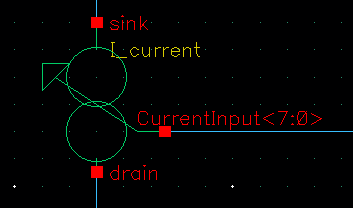Learn how to calculate the gain of a basic 2-stage CMOS Op-Amp using Cadence Virtuoso. Explore theoretical analysis, transient simulation, and AC simulation methods to accurately measure op-amp performance, stability, and frequency response in analog circuit designs.
How to measure the gain of an Op. Amp. in a simulation in Virtuoso?
In the design and analysis of analog circuits, determining the gain of an op. amp. is essential for evaluating its performance. A common approach involves using simulations alongside theoretical calculations to obtain a precise understanding of the circuit’s behavior.
This article focuses on the gain calculation of a basic two-stage CMOS op-amp, comparing different methods used in Cadence Virtuoso simulation tools.
Gain Calculation in an Operational Amplifier
The gain of an op-amp can be determined through various methods, we are going to explore 3 approaches to measure the gain of an Op. Amp. using CAD simulations.
The gain of an op-amp reflects the amplification of the input signal.
The schematic of the basic two-stage operational amplifier under consideration is depicted below:

Method 1: Analysis and Theoretical calculations
By performing a theoretical analysis of the circuit, we can derive the gain from the operational parameters of the devices.
The gain of each stage can be expressed as:

The output resistance is

The output resistance of two MOSFET devices in parallel (ro1||ro2) can be better calculated using the conductances (gds), which is also a device parameter in Cadence.

The parameters gm1, ro1, ro2… are extracted from the DC operation point simulation of the circuit. For this, the biasing point must be set correctly.
Simulating the previous circuit, the analytical results including the op points in the calculator are:

Note: The above expressions are made with Synopsys Custom Compiler EDA tool. The nomenclature and syntax may be slightly different in Cadence Virtuoso.
Often, the gain is expressed in dB, for which, we must apply the following formula:
![]()
Simulations in Cadence
There are several methods to calculate the gain. The methods I consider easier and more straightforward are:
- Analytical
- Transient simulation
- AC simulation
Method 2: Transient Simulation
This is the most straightforward simulation method and is easy to understand. Starting from the definition of the Gain:
Gain = ΔVout/ΔVin
We apply a stimulus at the input voltage, and then observe the effect on the output voltage.
The test bench can be seen in the following schematic, where the positive input has a sinus input wave, and the negative input of the op. amp. is tied to a reference voltage.

The properties of the “Vposi” vdc voltage source are:

Set up a transient simulation with sufficient time to simulate, at least, one full cycle.
Graphically, we can see the output waveforms, where ΔVout is 8.89mV, and the ΔVin = 20uV:

Therefore,
Gain = 8.89mV/20uV = 444.5
The outputs and results extracted from the calculator:

The input stimulus must be chosen to not saturate the output and also maximize the increment of the output voltage, in this way the calculation is more exact.
Method 3: AC Simulation
An AC simulation provides a picture of how the gain varies with frequency (Bode Diagram). This is crucial for determining the bandwidth, stability, and the frequency performance of the op-amp.
![]()
AC simulations linearize the circuit around a bias point and calculates the response to a small AC signal, providing direct valuable information such as gain, phase margin, BGW, etc. over a wide frequency range.
To stimulate the circuit, we must insert an small AC signal at the input, in this case, the positive input. The amplitude of the “vsin” voltage source is not relevant. It is usually set to 1V, but you can also set it to 1mV.

To set up the AC analysis, select the frequency range for the simulation. You can start with 1Hz to 1GHz. The number of points per decade for a Bode Plot can be set to 20, depending on the detailed frequency response required.
The result is a Bode plot, where we can extract the DC gain for low frequencies, and observe how the gain changes with frequency.

Results Comparison
The following table summarizes and compares the gain calculation with the three presented methods. All of them converge on the same result: 53dB of gain.

Comparing the presented methods…
the AC simulation with small-signal gain calculation is the most common and preferred method due to its simplicity, and computational efficiency, compared with running a transient simulation. Moreover, it provides other important metrics of the frequency behaviour of the circuit, such as phase margin, gain margin, GBW, etc.
Transient simulations are long and therefore, time-consuming, especially if the gain value over a range of frequencies is desired. Often, the signals need time to settle before you can accurately measure the steady-state output. This is particularly challenging at lower frequencies, where longer simulation times are required to capture a full cycle of the signal.
The analytical method is useful to know for understanding the circuit behaviour, but it may not always be applicable for real and complex circuits.
In conclusion, using AC simulations in Cadence to calculate the gain of an op-amp allows you to efficiently analyze the performance, stability, and frequency response, which are crucial for ensuring proper functionality in analog circuit designs.





Thank you for the explanation.
I checked offset simulation topic also.
Can you give some idea on how to calculate gain of diff opamp outputs by simulation.
Hi Sivesh,
Sure, check this out!
“How to calculate the Gain”
https://miscircuitos.com/gain-calculation/